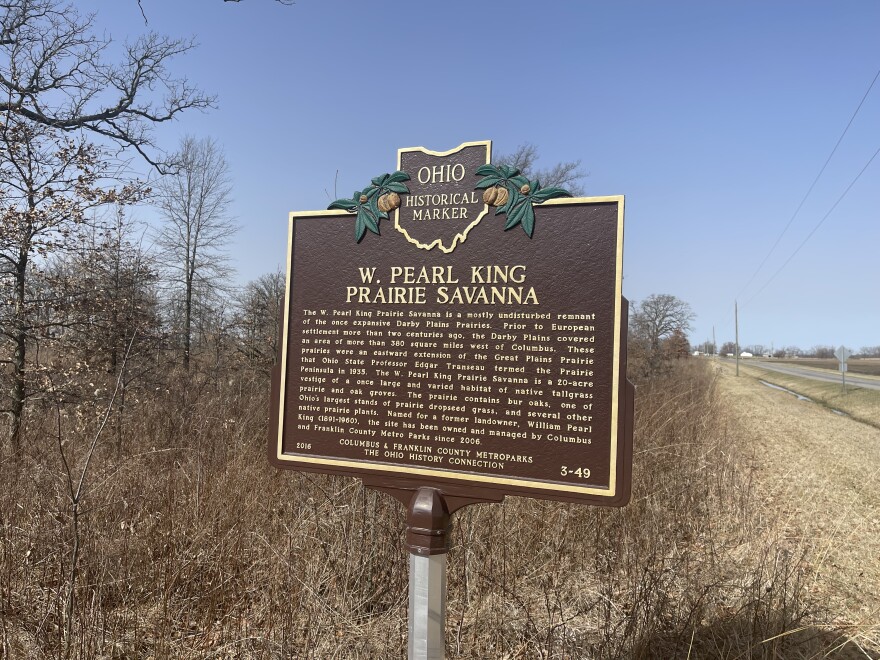Volunteers from the Ohio Natural Areas & Preserves Association cut back non-native plants and painted roots with herbicide at an ecologically significant site in Mechanicsburg last week. They were there to get it ready for a prescribed fire next month.
The W. Pearl King Prairie Oak Savannah State Nature Preserve is on the border of Champaign and Madison counties. Surrounded by hundreds of acres of conventional farmland, it’s dotted with ancient, fire-resistant burr oak trees and unique native plants like prairie dropseed and little bluestem.
Ecology professionals at the volunteer event said the preserve is the last original, untilled oak savannah in the Darby Plains — a collection of flatlands that once took up hundreds of square miles in the area between Columbus and Dayton before settlers stripped the land to farm it.

The oak savannah needs to be regularly burned for maintenance. If it isn't, the prairie would grow into forest and the flora and fauna that rely on it for habitat would be pushed out.
Ohio tribes and their ancestors have done controlled burns at savannahs for millenia. Now, land management professionals like Carrie Morrow with Columbus Metroparks do the same thing.
“It's primarily our fault that [oak savannahs] have been degraded and been so diminished,” Morrow said. “So it's our job to bring that back and take care of it for future generations to enjoy and for the health of our planet.”
The volunteers were prepping for the burn by getting rid of non-native plants like bush honeysuckle for two reasons: first, to make sure the non-native plants don’t crowd out rare, native ones at the savannah. Second, by getting rid of those non-natives it will help the 20-acre property burn evenly in March when it is set on fire.
Another reason environmental professionals want to maintain the property is because the seeds they collect from the native plants can then be replanted at other nearby, restored prairies.
Andrew Gibson, a field botanist with the state, said seeds with Darby Plains’ genotypes will do better at restored prairies in the area than seeds purchased from a place like Minnesota.
“You want to do an 'Ohio Prairies First' kind of thing where you're just using plants that naturally occurred here and persisted here because clearly they're used to it and they like it,” Gibson said, "you want to keep that genotype alive.”
Jennifer Windus is vice president on the board of the Ohio Natural Areas and Preserves Association, which organized the event.
“We're going around the state all the time and we feel like every place we go, we're putting this little Band-Aid on a gaping wound." She said, "But every little bit that we do, we're making a difference to save natural areas in Ohio.”
Chris Welter is a reporter and corps member with Report for America, a national service program that places journalists in local newsrooms.



